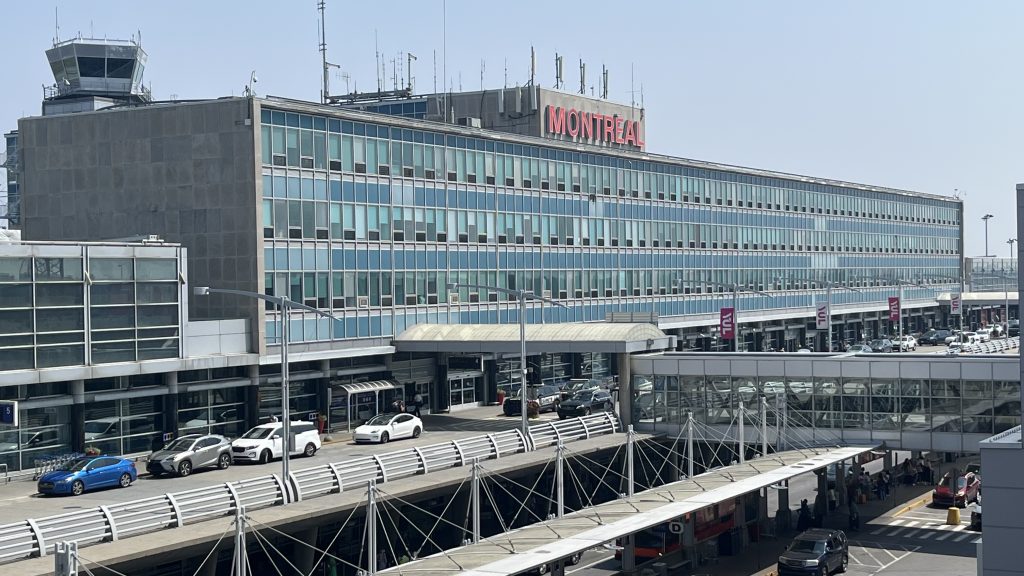Major construction projects are planned on the grounds of Montreal-Trudeau Airport in the coming months and years, and citizen groups are deploring the “worrying secrecy” with which public consultations regarding this expansion are being conducted. They also fear the impact the projects could have on high ecological value environments and endangered species north of the airport.
The work planned at Montreal-Trudeau Airport and its surrounding areas in the coming years is estimated at $10 billion.
These works include a new satellite jetty which will be built to the north of the current terminal, and which will be able to accommodate up to 24 additional aircraft.
Related:
In a decision published on July 30, airport authorities determined that the project “is not likely to cause adverse environmental effects.”
But Katherine Collin, president of Technoparc Oiseaux, who has campaigned for years to protect the biodiversity of the land north of the airport, deplores “a lack of transparency, a lack of adequate consultation and a lack of understanding of the urgency of the climate situation and the biodiversity crisis.”
A sector with high ecological value
Part of the area north of the airport, straddling the boroughs of Dorval and Saint-Laurent, is made up of wastelands, marshes, ponds and wooded areas where foxes, coyotes and even beavers live in an urban environment.
More than 222 bird species have also been recorded in this popular birdwatching area. It also features the “Monarch Field,” which contains thousands of milkweed plants, essential for the reproduction of the endangered monarch butterfly.
“Unfortunately,” the environmentalist pointed out, in the decision published on July 30, “it is not written precisely” where the new satellite jetty will be built “and what its extent will be,” so “this is worrying,” because “natural environments and aquatic and wetland environments are distributed throughout the sector.”
Indeed, the decision issued on July 30 does not indicate the precise location where the jetty “capable of accommodating up to 24 aircraft” will be built.
In an email exchange with The Canadian Press, Aéroports de Montréal (ADM) media relations advisor Eric Forest stated that the jetty will be built on the former runway 10-28 “in a man-made, non-natural environment, and poses no environmental issues.”
If the construction of the jetty does not pose a risk to the environment, “why is there a whole litany of measures to mitigate negative environmental impacts in the decision notice?” asked Katherine Collin.
In the decision notice, ADM wrote that “the construction of a satellite jetty on the YUL site is not likely to cause significant adverse environmental effects by applying the mitigation measures provided for in the project.”
Dozens of mitigation measures are listed in the notice published on July 30, including, “avoiding work (clearing, vegetation control) during the nesting period (mid-April to the end of August)” and “not damaging areas where a few milkweed plants have been observed,” or “checking for the presence of special-status species and applying the regulations in force”.
ADM also plans to move fish if necessary, “install watertight collection tanks under small hydrocarbon devices” or “use biodegradable oils for equipment less than 30m from a watercourse, provide hydrocarbon recovery kits accessible in all work areas” and “apply the emergency procedure” in the event of an incident.
“These mitigation measures are preventive, because in the long term, the work will not have an impact on the watercourse,” Forest said in an email.
Despite the explanations of the ADM spokesperson, for the president of Technoparc Oiseaux, “the project remains very vague” and “the long list of mitigation measures seems like a template for future projects.”
A decarbonization hub in the Monarch Butterfly field sector
One of the biggest concerns of the citizens’ group she represents is that ADM’s master plan is very clear: it wants to develop and develop and raze the vast majority of natural environments and green spaces that are on state land (which belongs to the State).”
The airport lands, and the areas of high ecological value located to the north of it, belong to the federal government, which leases them to Aéroports de Montréal.
In its 148-page “Horizon 2023-2043” master plan, ADM states that it plans to build “a decarbonization and airport operations support hub in the Chemin de l’Aviation sector” to “increase YUL’s capacity to supply sustainable energy.”
On the maps published in the ADM master plan, the Aviation Road sector corresponds to a part of the high ecological value sector which includes the monarch butterfly field.
“We know that there are plans to develop the entire monarch butterfly field,” and “we also know that the work is planned to make an incursion into part of a forest that has been designated as an exceptional forest ecosystem,” said Collin, referring to the entire banks of the Bertrand stream between the headwaters of the watercourse and the Bois-de-Liesse nature park.
“We have lots of questions and also lots of concerns.”
Assessment: Groups denounce conflict of interest
Among the concerns raised by ADM’s projects, citizen groups cited the fact that Aéroports de Montréal is responsible for assessing the environmental impact of its own projects.
“In our opinion, there are issues of democracy and transparency, and there is no serious impact assessment,” denounced Nathalie Ainsley of Mères au front Montréal, citing a conflict of interest.
In an email exchange with The Canadian Press, Stéphane Perrault, spokesperson for the Impact Assessment Agency of Canada, explained that the agency’s “mandate is to review major designated projects” such as “pipelines, ports, mines, etc.”
However, “the satellite jetty, multi-level parking and landing area projects proposed at Montreal-Trudeau International Airport are not designated projects.”
In the case of projects carried out at the airport, it is the airport itself that acts as the “federal authority”.
As a federal authority, ADM has a duty to post a “notice of intent, which informs the public of the project and must provide for a public consultation period” and also post “a notice of decision, which indicates whether the project can proceed and describes the mitigation measures aimed at reducing the negative effects.”
The notice of intent for the satellite jetty project was published on the Impact Assessment Agency of Canada’s website on June 27 and invited the public to comment until July 27, 2025.
“Do you know many people who get up one fine summer morning and go and look at the projects on the Impact Assessment Agency of Canada’s website?” reacted the Mothers at the Front activist, denouncing the “worrying discretion” with which public consultations are conducted.
Mothers at the Front Montreal also questions the short delay between the end of public consultations on the project on July 27 and the publication of the notice of decision on July 30.
“That gives them two days to write this, it seems bogus to me, it was written in advance,” said Nathalie Ainsley fumed.
“Also, this assessment of the pier is only based on the impact of the work and does not take into account the impact of adding 28 planes. What will be the impact on air traffic and pollution?”
Major airport projects “should not be assessed piece by piece, without an overall vision. Citizens, municipalities and scientists must be fully informed, consulted and heard,” the activist added.
In response to the various criticisms, spokesperson Eric Forest indicated that “Aéroports de Montréal always respects the deadlines prescribed for consultation periods and complies with all provisions of the Impact Assessment Act implemented by the Canadian government” and that “all projects are published in the Canadian Impact Assessment Registry, in accordance with the Impact Assessment Act.”
Citizens who want to participate in the consultations can access information about the consultation process through the ADM website, through the community relations page or directly through the registry, Forest said.
ADM also argues that “as of 2023, and for a period of 18 months,” the airport management conducted “a vast consultation process on its YUL 2023-2043 Master Plan, including meetings with 43 organizations from the Montreal community as well as a survey to which 2,250 participants from the general public responded” and that “this was submitted to the Minister of Transport of Canada in Dec. 2024, and approved in the spring of 2025.”
–This report by La Presse Canadienne was translated by CityNews





